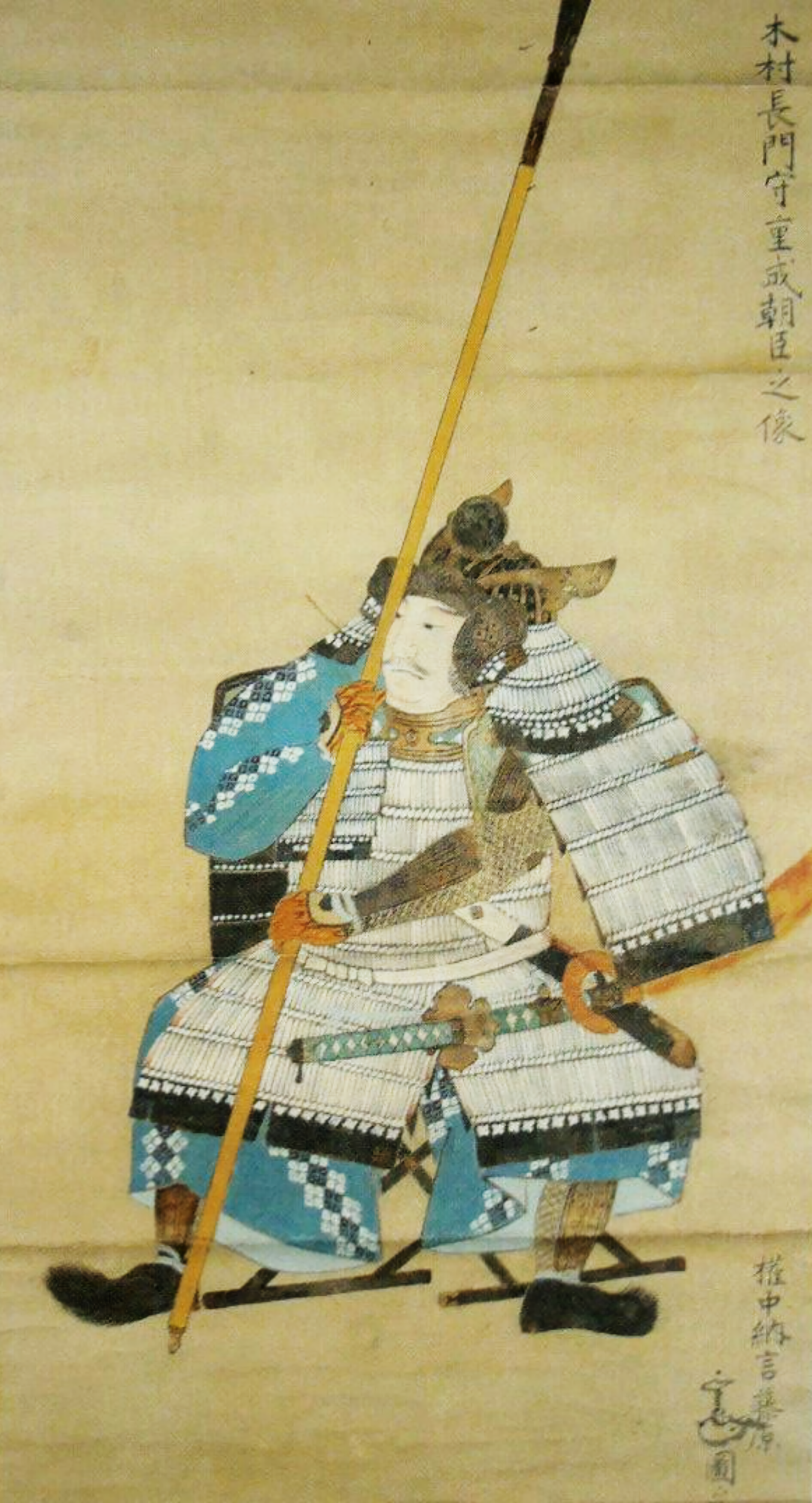Kimura Shigenari on:
[Wikipedia]
[Google]
[Amazon]
 was a Japanese
was a Japanese
 was a Japanese
was a Japanese samurai
were the hereditary military nobility and officer caste of medieval and early-modern Japan from the late 12th century until their abolition in 1876. They were the well-paid retainers of the '' daimyo'' (the great feudal landholders). They ...
of the early Edo period
The or is the period between 1603 and 1867 in the history of Japan, when Japan was under the rule of the Tokugawa shogunate and the country's 300 regional '' daimyo''. Emerging from the chaos of the Sengoku period, the Edo period was character ...
. A retainer of the Toyotomi clan
The was a Japanese clan that ruled over the Japanese before the Edo period.
Unity and conflict
The most influential figure within the Toyotomi was Toyotomi Hideyoshi, one of the three "unifiers of Japan". Oda Nobunaga was another primary un ...
, Shigenari fought at the Siege of Osaka
The was a series of battles undertaken by the Japanese Tokugawa shogunate against the Toyotomi clan, and ending in that clan's destruction. Divided into two stages (winter campaign and summer campaign), and lasting from 1614 to 1615, the siege ...
(leading Toyotomi forces at the Battle of Imafuku
The was fought in late November 1614 between the forces of Tokugawa Ieyasu and the Toyotomi clan. This battle was one of the first of the series of battles fought near Osaka over the course of two years. The village of Imafuku stood on the nort ...
) and died in battle.
Kimura Shigenari was a son of Kimura Shigekore, also known as Kimura Hitachi no suke (vice-governor of Hitachi), one of the chief counselors of Toyotomi Hidetsugu, but much of his origin remains uncertain. His mother was Toyotomi Hideyori's wetnurse: that was why Shigenari was able to become Hideyori's page at an early age and his vassal later.
At the Winter Siege of Osaka (1614), his first campaign, Shigenari commanded an army as a general and fought well. In recognition of his distinguished deed in that battle Hideyori bestowed on him a testimonial that acclaimed him as the “peerless hero of the nation”, together with a short sword made by Masamune
, was a medieval Japanese blacksmith widely acclaimed as Japan's greatest swordsmith. He created swords and daggers, known in Japanese as ''tachi'' and ''tantō'', in the ''Sōshū'' school. However, many of his forged ''tachi'' were made into ...
, the famous swordsmith. However, he returned those rewards immediately, because of his loyalty and absolute trust in the Toyotomi family.
A year later, during the Summer Siege of Osaka, he left the castle walls, leading the main force of the Toyotomi army and fought against Ii Tadataka's troops. In that battle, Shigenari wore a suit of armor called kozane made of gold and silver scales, with a white '' horo'' (a mantle meant to disrupt the flight of oncoming arrows), and rode a black horse. He fought an all-out battle, charging with a 6-yard-spear himself, and was caught in the action. He was beheaded, and the head was taken to Tokugawa Ieyasu
was the founder and first ''shōgun'' of the Tokugawa Shogunate of Japan, which ruled Japan from 1603 until the Meiji Restoration in 1868. He was one of the three "Great Unifiers" of Japan, along with his former lord Oda Nobunaga and fellow ...
, who saw it neatly trimmed on the forehead and the hair tidily cut and perfumed with incense. Everything indicated that he had gone into the battle well prepared to die in the field.
Family
* Kimura Shigekore ( :Ja:木村重茲): FatherReferences
*Naramoto Tatsuya (1994). ''Nihon no Kassen: Monoshiri Jiten''. Tokyo: Shufu to Seikatsusha. Samurai 1593 births 1615 deaths Japanese warriors killed in battle {{samurai-stub